This semester, as part of Matthew Burtner’s “Musical Materials of Activism” class, I wrote a short analysis paper on William Basinski’s 2002 work The Disintegration Loops.
The Disintegration Loops consists of two pieces, d|p 1.1 and d|p 2.1, which were created by playing tape loops made by Basinski over extended periods of time on tape players. Due to dust in the tape heads of the tape players the loops naturally disintegrated during that time, and the result of this process was recorded onto a CD recorder. The program notes of The Disintegration Loops read “This music is dedicated to the memory of those who perished as a result of the atrocities of September 11th, 2001, and to my dear Uncle Shelley.”
In the paper I view The Disintegration Loops through many different lenses, including tape loop music, musical re-purposing, auto-destructive art, and elegiac music. I start by analyzing the sonic content of d|p 1.1: the 2 melodic voices it is made of and the additive and subtractive effects of disintegration. I then compare it to other tape music works by Reich and Eno. Next I put it within the context of auto-destructive art (after Gustav Metzger) and juxtapose it with I Am Sitting In A Room and the glitch music of Oval. Lastly I contrast it with Penderecki’s Threnody for the Victims of Hiroshima and Adams’ On The Transmigration of Souls, elegies that I believe primarily take advantage of collective memory, rather than personal memory as The Disintegration Loops does.
Ultimately, in The Disintegration Loops and specifically d|p 1.1, Basinski has created a work of art where not only the characteristics of the work, but the medium of production (the recording of tape player disintegration) and the context of production themselves are born from the catastrophic event it is referencing. In other words, Basinski’s personal experience of the destruction of the World Trade Center, a seemingly immovable marvel of technology disintegrated into rubble, has bled into the composer’s practice, and not only a new work but a new work built on a new technique, custom-made for the composer’s experience of the catastrophe, is created. This modeling of the catastrophe and subsequent capturing of disintegration gave the composer control over a disintegrative process at a time when a real-world disintegration going on around him was completely out of his control. This intense relationship between composer, event, and artwork suggests the possibility that not only can The Disintegration Loops help Basinski through his personal memories, but the work could also potentially affect the collective memory, that is that the coping effect that The Disintegration Loops had for its composer could be extended to the rest of humanity affected by the catastrophe it was spawned from.
Peruse the full paper below.



